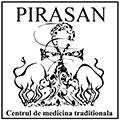The diagnosing methods in traditional medicine are neither painful nor invasive; they do not cause any discomfort and they have a very high degree of accuracy and efficiency. By means of bio-scanning, thermography and pulse interpretation the necessary information is achieved to determine a right diagnosis and an efficient treatment.
ETM consultation – diagnosing by the Eastern traditional medicine methods
In the Eastern traditional medicine, the consultation is based on interrogation of patient, on examination of his/her tongue, iris, pulse, skin and muscle tone.
The tongue will be examined as:
- shape (pointed, round, flat etc.)
- dimension
- integrity (fissures)
- presence or absence of lingual deposit (colour and location)
At the level of the radial artery of both hands are felt the superficial and the profound pulse in three points. The characteristics of a person’s pulse provide information about the physical and energy status of all organs and of the body as a whole.
Over the iris surface there are areas representing projections of the organs. In the iris may appear various pigmentation or micro scars in the areas corresponding to the organs. Their presence shows that the respective organ is in pain.
By associating skin affections with the nerve innervating the respective area, the doctor may reach to a conclusion regarding the patient’s state of health.
The muscle tone shows the status of the energy meridians, of the nerve innervating the respective muscle or muscle group.
The information gathered from the consultation lead to establishing the cause of the present disease. One must not forget that physician-patient communication as well as building real communication bridges is of utmost importance. It is recommended to present the symptoms in an objective manner and without exaggerating or diminishing their importance. One must keep in mind that the diagnosis is established by the physician, not by the patient, on the basis of latter one’s personal assumptions.
Once the diagnosis has been reached at and according to each patient’s affections, the necessary treatment methods are established: acupuncture, apiphytotherapy, reflexology, therapeutic massage, diet, orthopedic massage and medical psychological counseling. The physician will recommend one or several of the mentioned methods and – under the physician’s guidance – the patient will choose one of the suggested options.
Computerized Thermography of Contact
Thermography is a high performance diagnosing method for the investigation of BREAST, THYROID GLAND, HYPOPHYSIS, OVARIES and of the OSSEOUS SYSTEM, in order to find the present affections or their risk of occurrence.
Each organ of the human body has a representation at skin level. The heat values of the respective areas are scanned by thermography and, depending on the values obtained, the affections as well as their seriousness are ascertained. The heat values show the status of the local metabolism.
Following the patient’s clinical examination, data are taken at cutaneous level through a number of heat sensors. After that the results are stocked in a computer system and arranged in a temperature map of the respective area. The map is automatically interpreted by the computer and the result is displayed on the screen. The result is accurate since the heat sensor “penetrates” into the tissue and takes the heat values in the depth of each tissue layer. The recording errors are reduced since gathering of heat information ceases automatically upon encountering lesions or obstacles and the examiner is alerted both visually and audibly.
Upon examiner’s wish, a confrontation may be made between the results obtained and displayed on the screen for a certain case and the whole temperature background of the organ. Where there is cancer suspicion, the thermograph computer requires a new test after applying a dynamic cooling test. The data obtained under the new temperature conditions will differentiate a cancer from an inflammatory process. Based on them, the benign character of the lesion may be ascertained, if that be the case.
The high performance of the method is not only the assessment of a right diagnosis but also the fact that a patient’s evolution and reaction to treatment may be watched and that occurrence of tumors may be foreseen. Malignant affections that are structurally untraceable by the classical analysis devices may be detected by the thermographic examination.
The medical examiner may require to be shown the results for a particular area of the affected organ or for the entire organ, a fact which increases the accuracy of the diagnosis.
Thermographic diagnosing is non-invasive; it is neither harmful nor radioactive, which leads to the conclusion that it may be repeated as many times as necessary.
In order to obtain a thermic image, one does not have to introduce a stimulus of a certain kind in the body, but to read the situation of the specific heat values at skin level. As it is non-invasive, the examination is also painless and it does not cause any discomfort.

